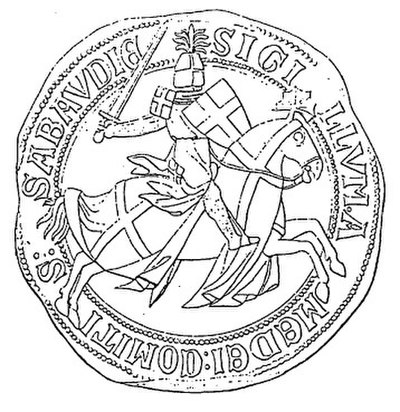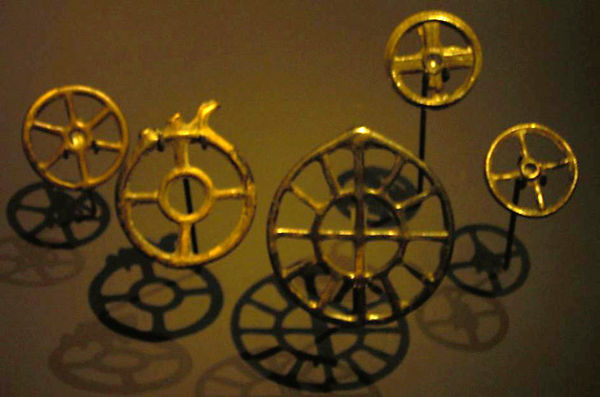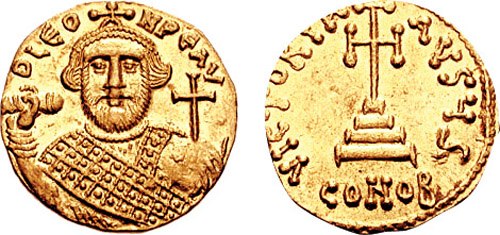Crosses in heraldry
Videos
Page
A number of cross symbols were developed for the purpose of the emerging system of heraldry, which appeared in Western Europe in about 1200. This tradition is partly in the use of the Christian cross an emblem from the 11th century, and increasingly during the age of the Crusades. Many cross variants were developed in the classical tradition of heraldry during the late medieval and early modern periods. Heraldic crosses are inherited in modern iconographic traditions and are used in numerous national flags.

9th-century Byzantine seal showing a patriarchal cross (seal of Niketas, commander of the Byzantine imperial fleet)

Seal of Bouchard de Marly (attested 1225), a cross, quarterly four alerions

Seal of Amadeus V, Count of Savoy (1249–1323), showing a knight on horseback displaying the Savoy cross on his shield, ailets (shoulder-pads) and caparison (horse covering)

A section of Segar's Roll, a 17th-century copy of a late 13th-century English roll of arms. Crosses are shown on the arms of: the legendary Prester John (attributed arms showing a full crucifix including the figure of Christ), the King of Jerusalem (the Jerusalem cross), the Emperor of Constantinople (the Palaiologos dynasty emblem with the Betas interpreted as crescents), the "King of Greece", and King Edward the Confessor of England (attributed arms showing a cross and five martlets).
Cross
Videos
Page
A cross is a geometrical figure consisting of two intersecting lines or bars, usually perpendicular to each other. The lines usually run vertically and horizontally. A cross of oblique lines, in the shape of the Latin letter X, is termed a saltire in heraldic terminology.

Bronze Age "wheel pendants" in the shape of the "sun cross" (Urnfield culture, 2nd millennium BC).

Early use of a globus cruciger on a solidus minted by Leontios (r. 695–698); on the obverse, a stepped cross in the shape of an Iota Eta monogram.